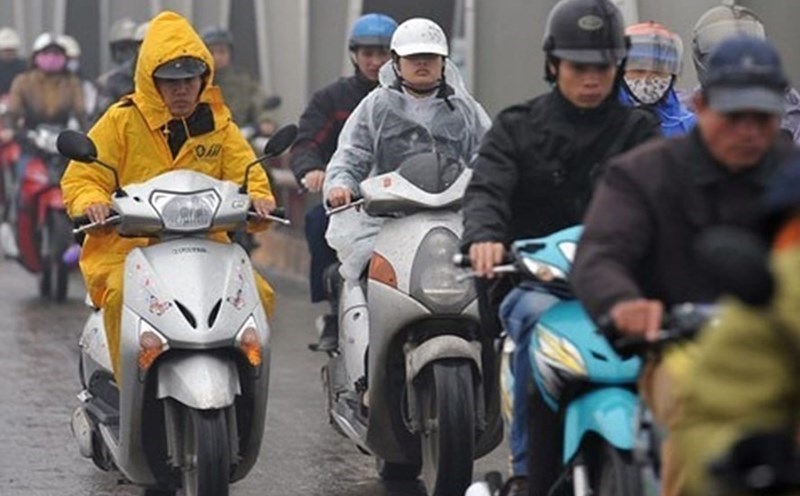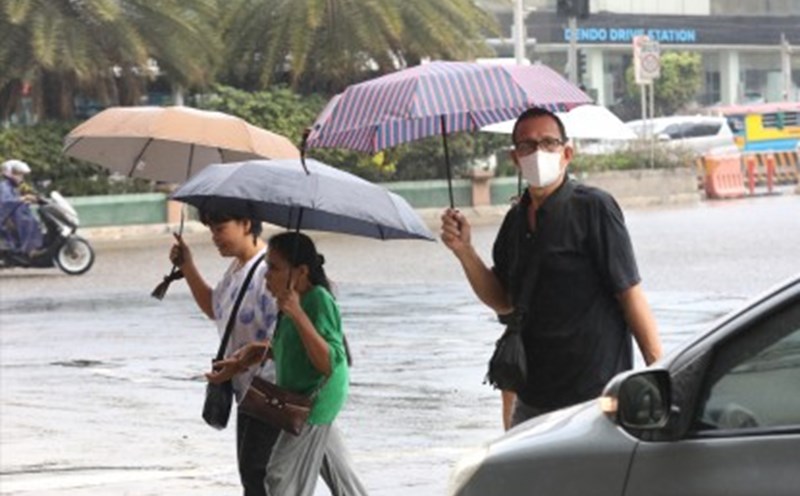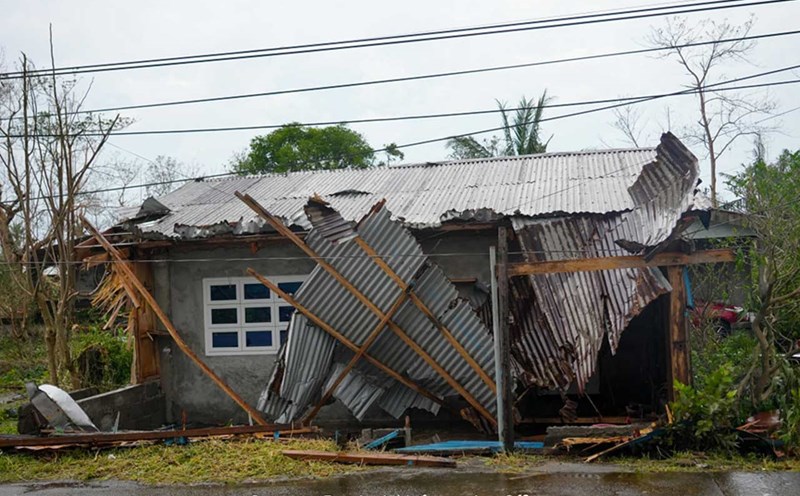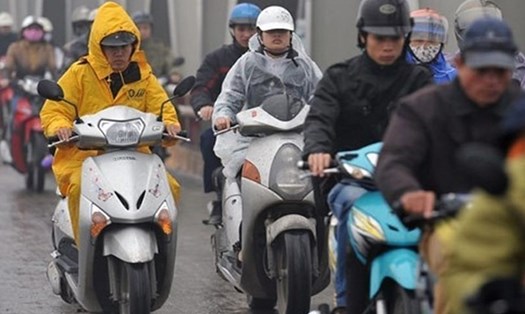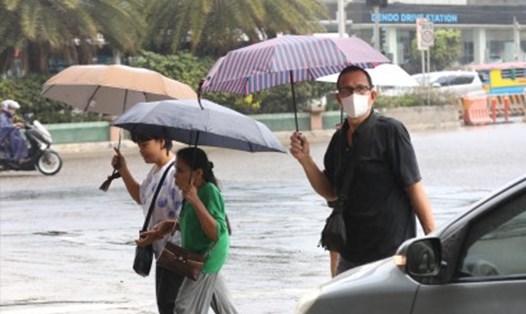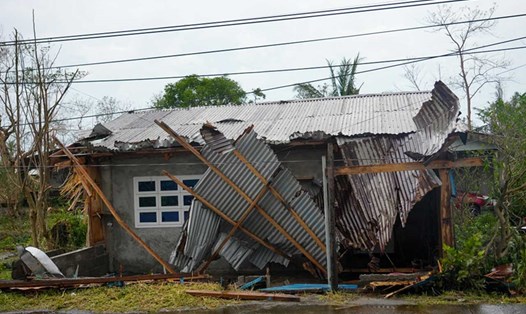According to the National Center for Hydro-Meteorological Forecasting, at 1:00 p.m. (November 10), the center of storm No. 7 Yinxing was located at about 18.8 degrees North latitude; 113.0 degrees East longitude, in the western sea area of the North East Sea, about 240km North-Northeast of Hoang Sa archipelago.
The strongest wind near the storm center is level 12 (118-133km/h), gusting to level 14. The storm moves southwest at a speed of about 5km/h.
Meteorologists predict that in the next 24 to 48 hours, the storm will continue to move southwest and weaken.
At 1:00 p.m. on November 11, the center of the storm was at 17.0 degrees North latitude -111.0 degrees East longitude; in the sea northwest of Hoang Sa archipelago. The intensity reached level 8, gusting to level 10.
At 1:00 p.m. on November 12, the storm center was at about 14.9 degrees North latitude - 108.5 degrees East longitude; on the mainland of Quang Nam - Binh Dinh.
Meanwhile, a new storm, internationally named Toraji, is active near the East Sea. At 1 p.m. on November 10, the center of the storm was located at about 15.2 degrees North latitude; 125.5 degrees East longitude, in the sea northeast of Luzon Island, Philippines.
The strongest wind near the storm center is level 11 (103-117km/h), gusting to level 13. Moving in the West Northwest direction, speed 15-20km/h.
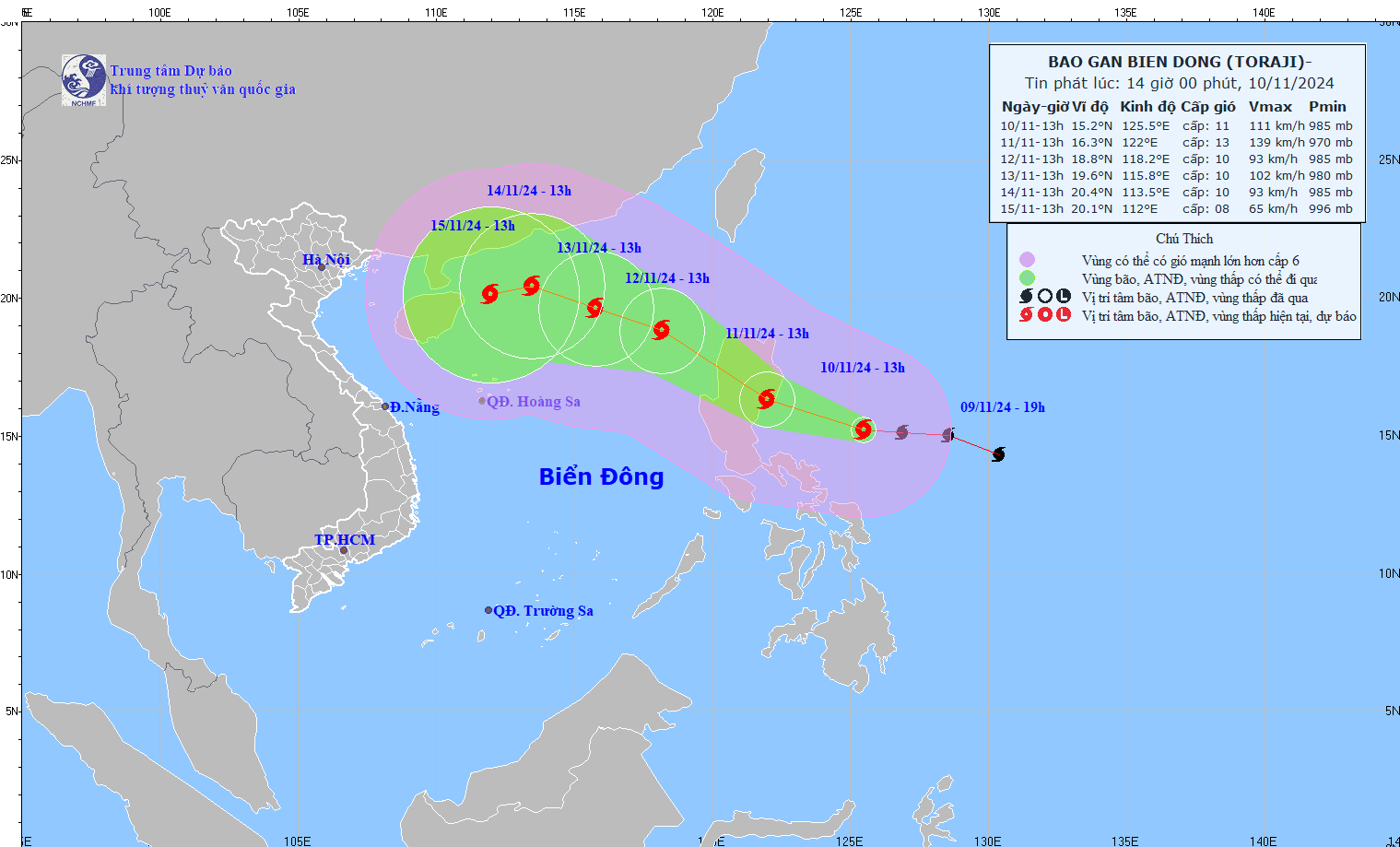
From the next 72 to 120 hours, the storm will move in the West Northwest direction and then possibly change to the West Southwest direction, traveling 10-15km per hour, with the intensity likely to weaken.
Philippine meteorologists predict that Typhoon Toraji (local name: Nika) will make landfall in Isabela or Aurora on November 11. The storm is then forecast to head towards China's Hainan Island, affecting the country's Guangdong province.
Due to the influence of the storm, from the night of November 10, the eastern sea area of the North East Sea has strong winds of level 6-7, then increasing to level 8, near the storm's center, level 9-10, gusting to level 12, waves 3.0-5.0m high, near the center 5.0-7.0m; very rough seas.
The western sea area of the North East Sea (including the Hoang Sa archipelago) has strong winds of level 7-9, near the storm center level 10-12, gusting to level 14, waves 4.0-6.0m high, near the center 6.0-8.0m; rough seas.
From early morning on November 11, the sea off the coast of Quang Tri to Quang Ngai has gradually increased winds to level 6-7, gusting to level 9, waves 2.0-4.0m high; rough seas.
Ships operating in the above mentioned dangerous areas are likely to be affected by storms, whirlwinds, strong winds and large waves.
Tourists planning to explore the Philippines during this time should pay attention to weather forecasts. The rainy season in this island nation (from June to October). The ideal time to travel to the Philippines is from November to April of the following year, when the temperature is comfortable and there is little rain. However, there is still a risk of late storms forming in November and December.

